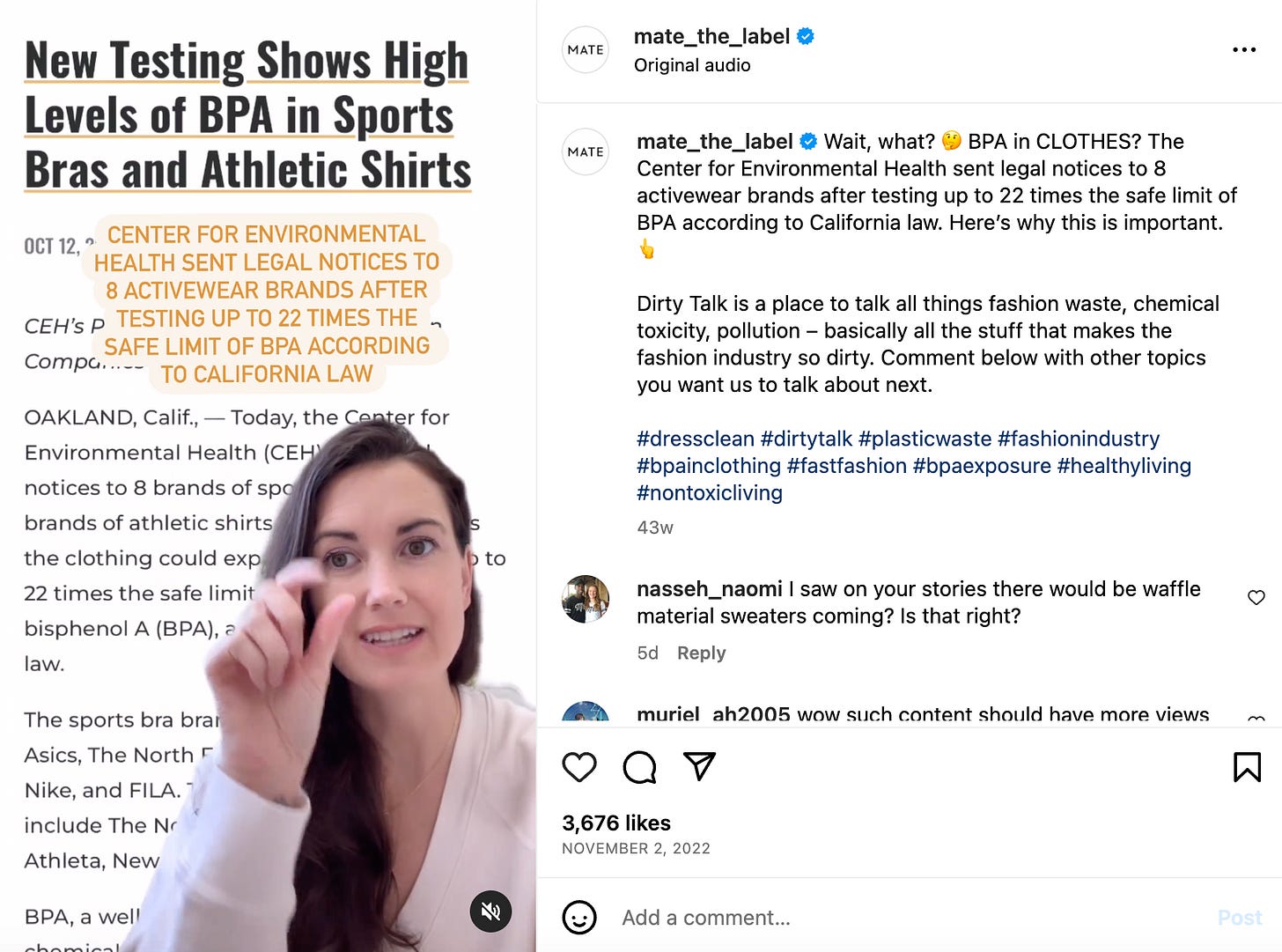I originally called this draft Quick Notes v1 with the idea of a brief roundup of digestible thoughts. But, I failed.
Anyway, below: optimistic DTC brands meet the reality of off-price retail; a simple formula for developing a unique brand voice; and the geopolitics that have turned TikTok Shop into a usability nightmare.
As always, thank you for being here. If you like what you read, please subscribe and share, and if you have thoughts of your own, don’t hesitate to reach out.
I. DTC brands are warming up to off-price retail. (ModernRetail)
DTC brands like Glossier, Caraway, and Quip have entered the wild world of off-price, unloading excess inventory at retailers like T.J. Maxx and Marshalls via digital distributors like Ghost. From what I can tell, these digital distributors are functionally the same as traditional distributors, but they look trendier, which absolves brands of the guilt of going off-price.
Traditional brands know sneaking excess inventory into off-price is half the game, and many assume at least 20% of their inventory will end up there. That prototypical DTC brands are now entering the fray is unsurprising given their too-late realization that acquisition costs make direct-only growth untenable. Throw some investor pressure into the mix, and I’m guessing trading volume for margin suddenly sounds quite nice.
That said, my guess is that the topic of the second lesson — diversion — will be more painful: the near guarantee that your off-price-allocated inventory will start appearing via resellers on Amazon and even in other countries. By design, the secondary market does not have the tight controls of the primary market. After all, the system only works if the inventory moves from the distributor to a buyer as quickly as possible.
It’s hard not to wonder if the automated nature of these platforms actually heightens the risk of diversion. It certainly sounds like it, as they promise to make it “radically easier to buy and sell coveted goods” while providing “access to the largest network of global distribution” while also providing “complete control over the destination of your goods.” Sounds like a contradiction to me.
II. Every brand is trying to be funny by using trending phrases and Gen Z speak. In the process, every brand is becoming the same. (Digiday)
I agree that social is driving brand homogenization, but I think that’s true of every tone, not humor alone. It’s not human laziness, either. TikTok, for example, rewards brands for using trending sounds, songs, and hashtags, and, by nature, Duets urge repetition.
This functionality misleads brands into thinking trend-hopping leads to growth, but it doesn’t. Occasional virality can help, but sustained growth only happens for brands that give potential followers something the competition cannot. The system of checks and balances is that simple: Could the competition post the same thing? If yes, is there a business imperative for doing so anyway?
MATE, an essentials brand out of Los Angeles, plays the game well. Compare the performance of the post below (3,600 likes, hundreds of highly engaging comments) to this post from a brand with 200,000 more followers (800 likes, 5 product-related comments). Algorithmically, those comments are infinitely more valuable than the meager likes you’ll get from following a trend.
Long story short: it pays to go deep, especially if your competition cannot.
III. TikTok Shop is on track to lose $500 million this year, but only as a result of significant investments in hiring, logistics, and merchant support, not a lack of user adoption. In fact, in Asia alone, the platform’s daily GMV is nearing $90 million.
If you’ve used Shop as a brand, you know how badly those investments are needed. The platform is a poster child for the pitfalls of rushed innovation. The user experience is exhausting, and their verified partners — the integrators you need to connect your Shop to Shopify — are even worse. (Looking at you, AfterShip.)
TikTok is unique, though, in that geopolitical tension between the US and China is partly to blame. Under pressure from the US, they’ve had to develop separate codebases for the US, China, and the rest of the world, as to ensure US user data isn’t being funneled to Chinese leadership. Therefore, if you have separate US and EU warehouses but an EU-registered TikTok account, your US customers will not see your Shop. In fact, you won’t even see your Shop if you’re in the US.
Instead, you’ll need a separate handle for each territory, which means separate campaigns, branched performance data, and so on. Layer in the usability issues, and it’s quite a lift. Unfortunately, consumers aren’t impacted and don’t care, so you’re left with little choice.
P.S. We’re going to see more and more of these issues across platforms, and not only by way of major geopolitical conflicts. Meta’s Threads, for example, has not yet launched in Europe due to the EU’s Digital Markets Act, and if it does, it is likely to be functionally different than what we’re using here in the US. Expect to experience more of this.







